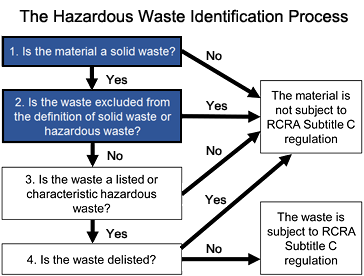The Main Principles Of Reclaim Waste
Table of ContentsLittle Known Facts About Reclaim Waste.The Ultimate Guide To Reclaim Waste8 Easy Facts About Reclaim Waste ShownFacts About Reclaim Waste RevealedThe Best Guide To Reclaim Waste
Domestic sewer waste refers to the waste and items from a domestic septic container. The appropriate administration and disposal of domestic sewer waste require fluid waste to be transferred to a sewer treatment plant where the correct techniques and equipment are used to detoxify and dispose of waste.
Industrial waste usually includes possible hazards, such as combustible materials or a mix of fluid and strong waste products, and needs a much more advanced and in-depth disposal procedure. The disposal of industrial waste typically involves the filtering of waste before transport to guarantee safe and proper disposal. Industrial waste is produced from results and runoff of industrial procedures and production.
This type of waste can not make use of the exact same sewer monitoring transport or processes as septic or industrial liquids. The industrial waste administration procedure calls for the examination and screening of fluid waste prior to it goes through the disposal procedure (liquid waste removal). Drainage waste is the liquid waste that comes from runoff and excess stormwater in highly inhabited areas or cities
Runoff waste can create contamination and flooding if not managed properly. Making certain proper waste management can prevent disasters and lower environmental harm.
Our Reclaim Waste Ideas
Contact PROS Providers today to find out about our waste management and disposal solutions and the appropriate means to take care of the fluid waste you produce.
(https://triberr.com/reclaimwaste1)Do you understand what occurs to your water when you disengage, purge the bathroom or drain the cleaning maker? No? Well, it's worth recognizing. This so-called 'wastewater' is not just an essential resource but, after therapy, will be released to our land, waterways or the sea. Used water from bathrooms, showers, baths, cooking area sinks, washings and industrial procedures is called wastewater.

water made use of to cool machinery or clean plant and equipment). Stormwater, a type of wastewater, is drainage that flows from farming and city areas such as roof coverings, parks, gardens, roadways, courses and gutters into stormwater drains pipes, after rainfall. Stormwater website link flows untreated straight to neighborhood creeks or rivers, eventually getting to the ocean.
Our Reclaim Waste Statements
In Queensland, many wastewater is treated at sewage therapy plants. Wastewater is transferred from domestic or commercial sites through a system of sewers and pump terminals, referred to as sewerage reticulation, to a sewage treatment plant. Regional federal governments construct, keep and operate most sewage treatment plants. Operators are licensed under the Environmental Defense Act 1994 to release cured wastewater at an appropriate ecological standard right into rivers.
The Division of Natural Resources advises city governments about managing, operating and keeping sewage systems and therapy plants. In unsewered locations, neighborhood federal governments may need homeowners to install individual or household sewer therapy systems to treat domestic wastewater from toilets, kitchens, shower rooms and laundries. The Division of Natural Resources authorizes making use of home systems when they are proven to be reliable.
The majority of stormwater obtains no treatment. In some brand-new subdivisions, treatment of some stormwater to get rid of trash, sand and crushed rock has actually begun making use of gross contaminant traps. Wastewater therapy happens in 4 phases: Removes strong matter. Bigger solids, such as plastics and other items wrongly released to sewage systems, are eliminated when wastewater is travelled through displays.
Makes use of small living organisms understands as micro-organisms to break down and remove remaining liquified wastes and great fragments. Micro-organisms and wastes are included in the sludge.
The Only Guide for Reclaim Waste
Nutrient removal is not readily available whatsoever sewer treatment plants because it requires expensive specialist tools. It is coming to be extra common in Queensland. Clear liquid effluent produced after therapy might still have disease-causing micro-organisms. If this effluent is launched right into waterways such as rivers or the sea, the micro-organisms will ultimately die out.

This generally indicates wastewater has to be dealt with or impurities removed prior to it can be released to waterways. Most wastewater flows right into the sewage system. Under the Act, local federal governments carry out authorizations and permits for environmentally pertinent activities (ERAs) involving wastewater releases that could have a regional effect. The division administers authorizations and licences to Ages involving wastewater launches that may have a local or statewide impact.
Reclaim Waste Can Be Fun For Anyone
Otherwise, examples are considered laboratory evaluation. Commonly several tests are needed to establish the levels of each of the different pollutants such as oils, hefty steels and chemicals in water. Monitoring offers factual info about water high quality and can validate that permit problems are being met. The information acquired with monitoring offers the basis for making water high quality choices.